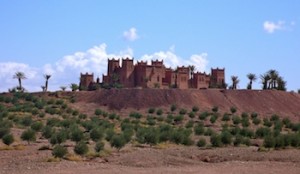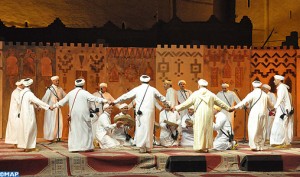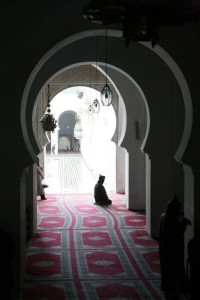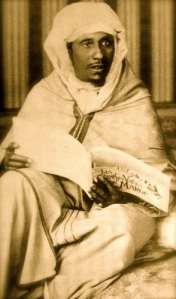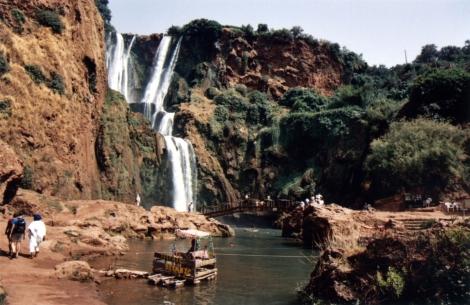Posts Tagged ‘Ait Benhaddou’
Ouarzazate became famous when it’s nearby Kasbah; Aït Benhaddou appeared in the 1962 film Lawrence of Arabia. This spellbinding quiet town is the perfect home base for exploring the southern region of Morocco which is comprised of ancient Kasbahs, the Dadès Valley, the Gorge of Todra, the Atlas Films Studios, the Skoura…
The 2nd edition of the Ouarzazate Festival will take place from September 14th – 19th, 2014. The Ouarzazate Music Festival serves as an opportunity to promote the young artistic talents of Ouarzazate and its region. The outdoor spaces “3 March” and “Al Mouahidines “, as well as the Kasbah Taourirt…
Some of the best Morocco Holiday Vacations are those spent on an unwieldy adventure. Travel Exploration Morocco offers many holiday vacation opportunities that range from ancient Imperial city tours to majestic nights in the Sahara Desert Tours, a regional visit of Southern Morocco’s Valley of Nomads, Mount Mgoun and Draa Valley region along with customized cuisine tours and private dining experiences at some of Morocco’s best restaurants. Planning a Morocco Holiday Vacation for the Christmas or New Years is easy when using the private Morocco tour services of a Morocco travel agency.
How does the Ramadan fast affect tourists traveling to the Imperial Cities, the Sahara Desert and other regions of Morocco during this high holy holiday? Can tourists eat or drink in public during Ramadan? This article should clear up the confusion on this issue for tourists, to explain the most polite solutions for tourist behavior at this time, and to assure tourists that there is no problem with them visiting Morocco during Ramadan. Because the Islamic calendar is lunar, holidays such as Ramadan advance by approximately ten days with each subsequent year. This means that Ramadan makes a cycle through the entire calendar of twelve months each twenty-some years. This year, Ramadan started on August 12th, 2010 in Morocco. The fast presently starts in Morocco at approximately 4:30 AM, and ends in the evening at approximately 7:30 PM.
For anyone interested in touring Morocco’s kasbahs or ksars, I highly recommend starting with Kasbah Taourirt, the Pasha Glaoui’s former palace in Ouarzazate. Kasbah Taorirt was built by the Pasha Glaoui. Its location was strategic for trading routes and in the 1930’s when the Glaoui ruled the South was then considered one of Morocco’s largest Kasbahs. Kasbah Taourirt was one of the places Glaoui kept his slaves. As a Moroccan traveler you can explore its nooks and crannies to discover its history and often local female painters who sell their art inside as well as the many quality silver shops just steps outside the Kasbah.
Pasha T’hami Glaoui was the most powerful man in Morocco between 1953 and 1956, in addition to being one of the richest men in the world at that time. The title Pasha means Governor. Glaoui was the Pasha of Marrakesh (since 1912), Ouarzazate, and most of the Moroccan south during the time Morocco was under French rule. The most important Kasbahs’ in Morocco that were occupied by the Pacha Glaoui during his reign and are frequented by Moroccan travelers today are Kasbah Taouirt, located in the center of Ouarzazate, Ait Benhaddou, located 15 kilometers outside Ouarzazate and Kasbah Telouet which sits in the village of Telouet nestled outside the Onilla Valley.
Berber Tours to Morocco are authentic way to Discover a Berber Village, visit ancient kasbahs and camel trek in the Sahara Desert. Discover a Berber Village is a Southern Morocco Cultural Tour that is an EXCLUSIVE Travel Exploration Morocco. Discover a Berber Village is a historical journey where Moroccan travelers can have an up close and authentic experience in a Moroccan, Berber Village while visiting the Ouarzazate and Zagora regions of Morocco. When traveling to Morocco, a Morocco vacation is not complete without visiting Morocco’s indigenous people and discovering its Berber Villages. A Berber Tour to Morocco is the most important Moroccan voyage for those who are interested in Morocco’s history and old world traditions.
A Zagora 4×4 Sahara Desert Tour of Amezrou Silversmiths and the Ancient Jewish Mellah offers a unique flavor of the Sahara. Places to visit include the Dunes of Tinfo, the Amezrou Silver makers workshops, the Tamagroute Pottery Cooperative, the old Spiritual Zaouia site, the Koranic Library and an adventure into the M’hamid Dunes of Sahara Desert. Zagora is a town that is nestled within the Draa Valley river in Souss-Massa-Draâ, southeastern Morocco. Zagora is surrounded by the mountain Zagora and is how this Saharan town got its name. Zagora was originally called ‘Tazagourt’ the singular of plural ‘Tizigirt’, Berber for ‘twin peaks’, referring to the form of the mountain. In old European maps the mountain Zagora is can be found however the town itself was only built in the 20th century.
Morocco boasts beautiful cities with majestic mosques, imperial palaces, and hotels worthy of royalty, but outside these sprawling cities there is a different sort of majesty and beauty for travelers to discover. Leaving the chaotic and busy city centers the Atlas Mountains and the sprawling Sahara desert give way to…

